Simon R. Arridge
j-Wave: An open-source differentiable wave simulator
Jun 30, 2022



Abstract:We present an open-source differentiable acoustic simulator, j-Wave, which can solve time-varying and time-harmonic acoustic problems. It supports automatic differentiation, which is a program transformation technique that has many applications, especially in machine learning and scientific computing. j-Wave is composed of modular components that can be easily customized and reused. At the same time, it is compatible with some of the most popular machine learning libraries, such as JAX and TensorFlow. The accuracy of the simulation results for known configurations is evaluated against the widely used k-Wave toolbox and a cohort of acoustic simulation software. j-Wave is available from https://github.com/ucl-bug/jwave.
A research framework for writing differentiable PDE discretizations in JAX
Nov 09, 2021

Abstract:Differentiable simulators are an emerging concept with applications in several fields, from reinforcement learning to optimal control. Their distinguishing feature is the ability to calculate analytic gradients with respect to the input parameters. Like neural networks, which are constructed by composing several building blocks called layers, a simulation often requires computing the output of an operator that can itself be decomposed into elementary units chained together. While each layer of a neural network represents a specific discrete operation, the same operator can have multiple representations, depending on the discretization employed and the research question that needs to be addressed. Here, we propose a simple design pattern to construct a library of differentiable operators and discretizations, by representing operators as mappings between families of continuous functions, parametrized by finite vectors. We demonstrate the approach on an acoustic optimization problem, where the Helmholtz equation is discretized using Fourier spectral methods, and differentiability is demonstrated using gradient descent to optimize the speed of sound of an acoustic lens. The proposed framework is open-sourced and available at \url{https://github.com/ucl-bug/jaxdf}
Unsupervised Knowledge-Transfer for Learned Image Reconstruction
Jul 06, 2021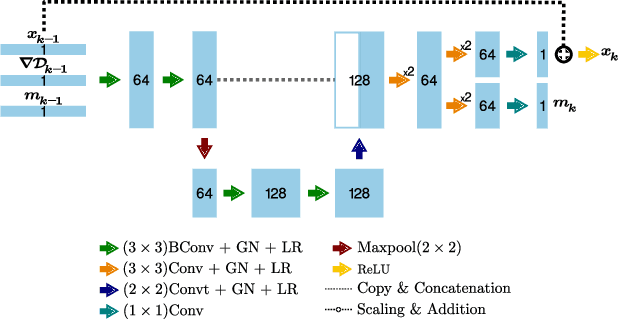
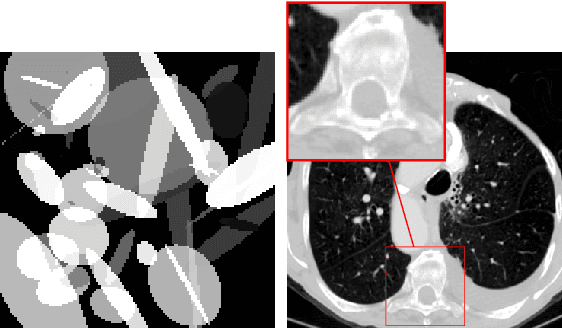
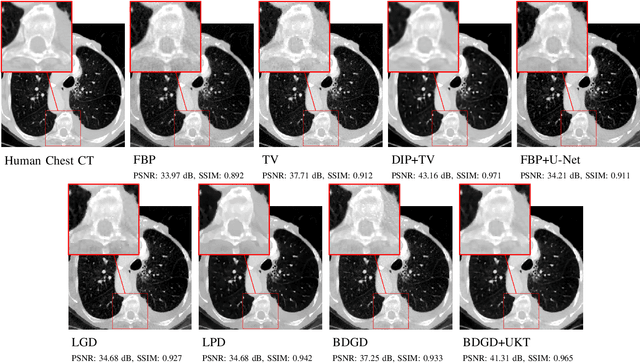
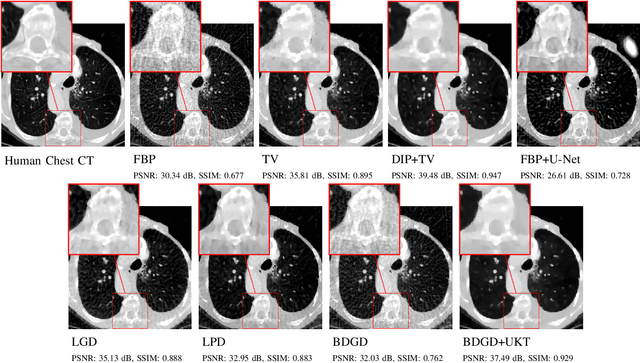
Abstract:Deep learning-based image reconstruction approaches have demonstrated impressive empirical performance in many imaging modalities. These approaches generally require a large amount of high-quality training data, which is often not available. To circumvent this issue, we develop a novel unsupervised knowledge-transfer paradigm for learned iterative reconstruction within a Bayesian framework. The proposed approach learns an iterative reconstruction network in two phases. The first phase trains a reconstruction network with a set of ordered pairs comprising of ground truth images and measurement data. The second phase fine-tunes the pretrained network to the measurement data without supervision. Furthermore, the framework delivers uncertainty information over the reconstructed image. We present extensive experimental results on low-dose and sparse-view computed tomography, showing that the proposed framework significantly improves reconstruction quality not only visually, but also quantitatively in terms of PSNR and SSIM, and is competitive with several state-of-the-art supervised and unsupervised reconstruction techniques.
Photoacoustic Reconstruction Using Sparsity in Curvelet Frame
Nov 26, 2020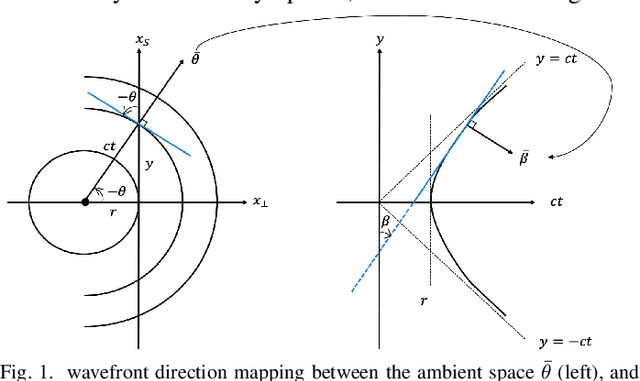
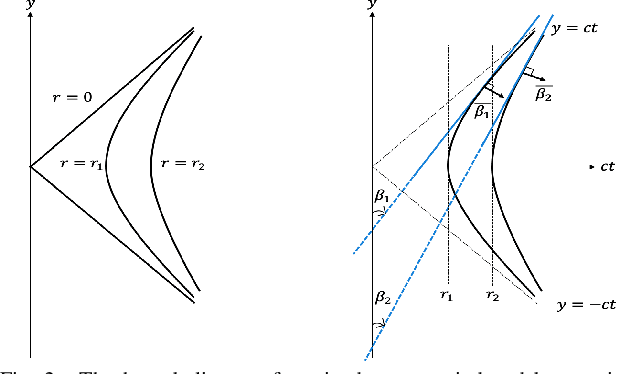
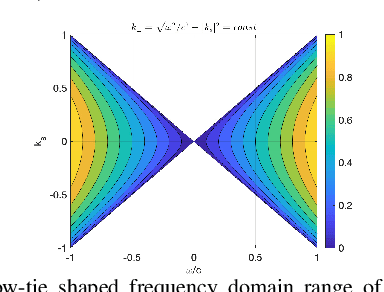
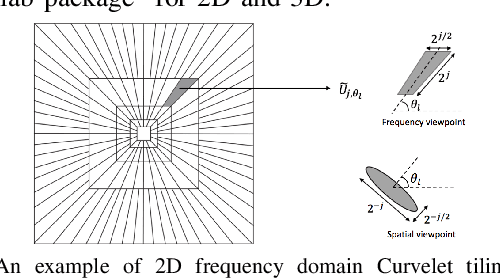
Abstract:We compare two approaches to photoacoustic image reconstruction from compressed/subsampled photoacoustic data based on assumption of sparsity in the Curvelet frame: DR, a two step approach based on the recovery of the complete volume of the photoacoustic data from the subsampled data followed by the acoustic inversion, and p0R, a one step approach where the photoacoustic image (the initial pressure, p0) is directly recovered from the subsampled data. For representation of the photoacoustic data, we propose a modification of the Curvelet transform corresponding to the restriction to the range of the photoacoustic forward operator. Both recovery problems are formulated in a variational framework. As the Curvelet frame is heavily overdetermined, we use reweighted l1 norm penalties to enhance the sparsity of the solution. The data reconstruction problem DR is a standard compressed sensing recovery problem, which we solve using an ADMM-type algorithm, SALSA. Subsequently, the initial pressure is recovered using time reversal as implemented in the k-Wave Toolbox. The p0 reconstruction problem, p0R, aims to recover the photoacoustic image directly via FISTA, or ADMM when in addition including a non-negativity constraint. We compare and discuss the relative merits of the two approaches and illustrate them on 2D simulated and 3D real data.
A Helmholtz equation solver using unsupervised learning: Application to transcranial ultrasound
Oct 29, 2020



Abstract:Transcranial ultrasound therapy is increasingly used for the non-invasive treatment of brain disorders. However, conventional numerical wave solvers are currently too computationally expensive to be used online during treatments to predict the acoustic field passing through the skull (e.g., to account for subject-specific dose and targeting variations). As a step towards real-time predictions, in the current work, a fast iterative solver for the heterogeneous Helmholtz equation in 2D is developed using a fully-learned optimizer. The lightweight network architecture is based on a modified UNet that includes a learned hidden state. The network is trained using a physics-based loss function and a set of idealized sound speed distributions with fully unsupervised training (no knowledge of the true solution is required). The learned optimizer shows excellent performance on the test set, and is capable of generalization well outside the training examples, including to much larger computational domains, and more complex source and sound speed distributions, for example, those derived from x-ray computed tomography images of the skull.
Numerical Methods for Coupled Reconstruction and Registration in Digital Breast Tomosynthesis
Jul 23, 2013



Abstract:Digital Breast Tomosynthesis (DBT) provides an insight into the fine details of normal fibroglandular tissues and abnormal lesions by reconstructing a pseudo-3D image of the breast. In this respect, DBT overcomes a major limitation of conventional X-ray mammography by reducing the confounding effects caused by the superposition of breast tissue. In a breast cancer screening or diagnostic context, a radiologist is interested in detecting change, which might be indicative of malignant disease. To help automate this task image registration is required to establish spatial correspondence between time points. Typically, images, such as MRI or CT, are first reconstructed and then registered. This approach can be effective if reconstructing using a complete set of data. However, for ill-posed, limited-angle problems such as DBT, estimating the deformation is complicated by the significant artefacts associated with the reconstruction, leading to severe inaccuracies in the registration. This paper presents a mathematical framework, which couples the two tasks and jointly estimates both image intensities and the parameters of a transformation. We evaluate our methods using various computational digital phantoms, uncompressed breast MR images, and in-vivo DBT simulations. Firstly, we compare both iterative and simultaneous methods to the conventional, sequential method using an affine transformation model. We show that jointly estimating image intensities and parametric transformations gives superior results with respect to reconstruction fidelity and registration accuracy. Also, we incorporate a non-rigid B-spline transformation model into our simultaneous method. The results demonstrate a visually plausible recovery of the deformation with preservation of the reconstruction fidelity.
 Add to Chrome
Add to Chrome Add to Firefox
Add to Firefox Add to Edge
Add to Edge